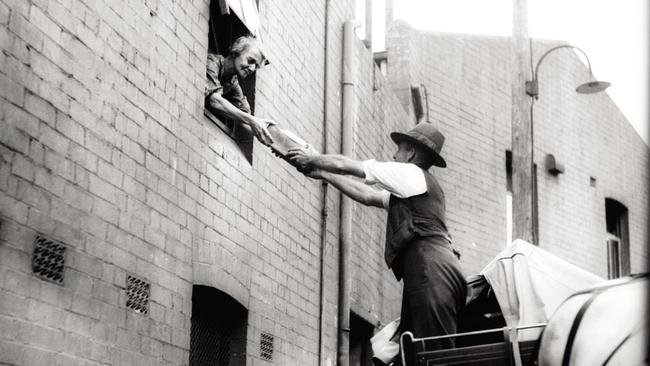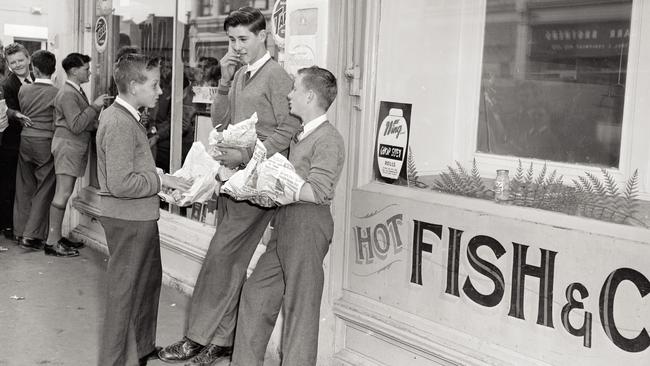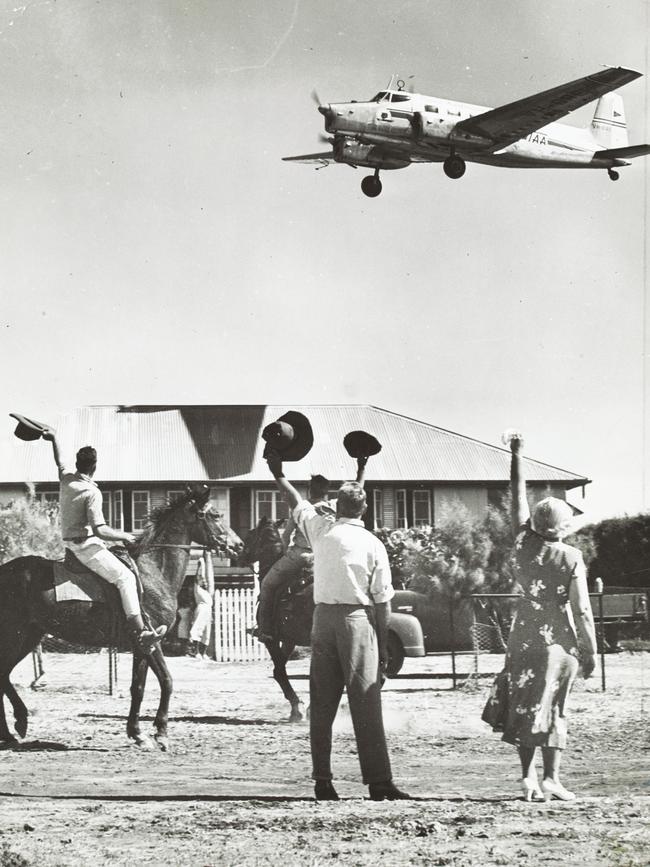In Living Memory by National Geographic encapsulates daily life in Australia in mid-20th century
See how much Australia has changed, and what life was really like from the 1930s to the 1970s, with a new photographic book titled ‘In Living Memory’.
Books
Don't miss out on the headlines from Books. Followed categories will be added to My News.
Step away from the 21st century — home to social media influencers, tech-savvy teens and access to unlimited information — and back in time with Australia Geographic.
It has released a new book, In Living Memory, which encapsulates daily life in Australia from the 1930s to the 1970s.
In Living Memory, by Alasdair McGregor, published in November, is a photographic chronicle of the highs, lows and trends of the mid-20th century — featuring snapshots of historic events, the average Australian’s living conditions and the building of iconic landmarks, including the Sydney Opera House and Harbour Bridge.



Comprising a majority of monochrome pictures — with some printed in colour to retain the tint and patina of the original photograph — In Living Memory captures Australian diggers cheerfully departing home soil to fight overseas in WWII, the changes to swimwear fashion and a day-in-the-life of children at school.
Not only does In Living Memory showcase Australian society in the mid-20th century on a visual front, it also details how events and societal rituals came to be.
MORE NEWS
Most shocking moments of the last decade
Best last-minute gifts as Christmas looms
Aussies urged to avoid deadly pet presents
One including how the Oslo lunch came about in schools, which was an initiative kickstarted to improve the everyday diet of children following the Depression.
“Another move to bolster the nutrition of schoolchildren focused on milk,” In Living Memory states.
“Milk was distributed free to crèches, kindergartens, and both public and private primary schools.



“Children were made to drink it no matter what its state of preservation.
“Warm, curdled milk, edging on the consistency of yoghurt, was said to have turned off many an Australian child of the 1950s and drinking the stuff for life!”
In Living Memory also captured the introduction of women’s roller derby from America to Australia, the early days of cars paying 6d to cross the Sydney Harbour Bridge and what the initial stages of first class looked like while flying with Qantas.


“In 1934, Qantas — the airline that had begun life flying two flimsy biplanes in the dusty reaches of outback Queensland and the Northern Territory less than 15 years before — joined forces with Britain’s Imperial Airways (a precursor of British Airways) to form Qantas Empire Airways (QEA) and fly all the way to Southampton in England,” In Living Memory details.
“The new company began using Short S. 23 Empire flying boats in 1938, with the Australian base of the operation at Rose Bay, Sydney.
“These all-metal aircraft accommodated just 15 passengers in considerable comfort on a journey that took nine days at a cruising speed of about 240km/h.”



In Living Memory editor Chrissie Goldrick said the book was a visual celebration of Australia.
“Against the backdrop of seismic international events, ordinary Aussies went about their daily lives doing the same things that people always have — living, working, making homes, caring for loved ones and finding opportunities to laugh and enjoy life, no matter how tough the times,” she said.


“The book is also a tribute to those who were there to capture those lives — the photographers who occasionally turned their cameras away from the big events of the day and trained them on arguably the most fascinating of all subjects: us.”
In Living Memory is available at all good bookshops and via the Australian Geographic website for $59.99.
Originally published as In Living Memory by National Geographic encapsulates daily life in Australia in mid-20th century


